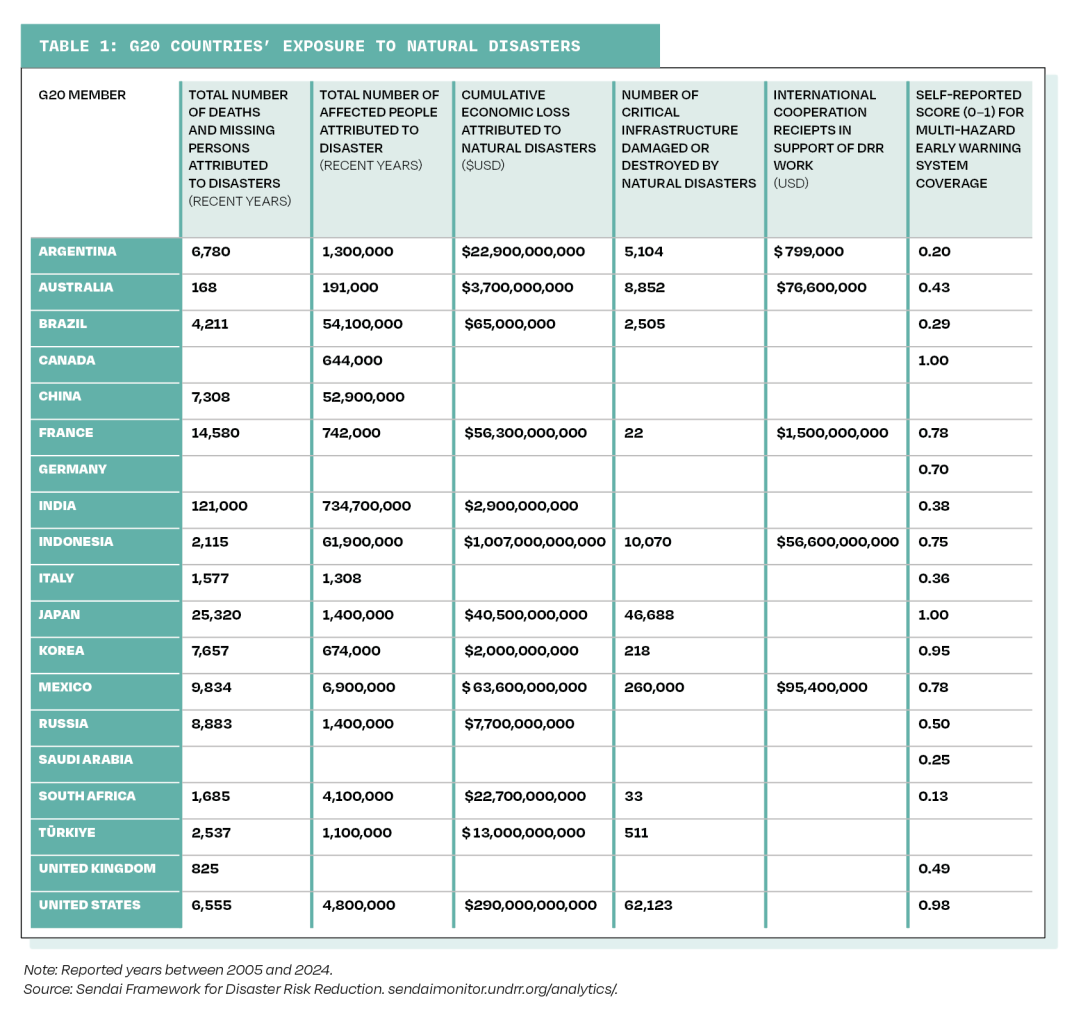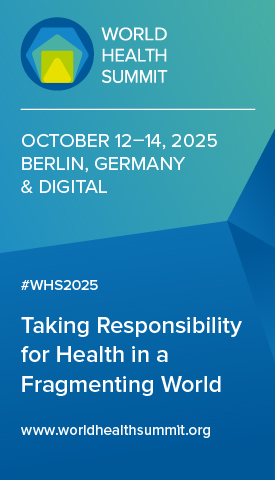An early warning for the G20: Turning data into decisive action on disaster resilience
The world is facing an unprecedented surge in climate-induced disasters, and the numbers tell a sobering story. Between 2015 and 2023, more than 124 million people were affected by disasters annually across the globe. Even more alarming, the rate of disaster-affected populations has jumped dramatically – from 1,158 per 100,000 people during 2005–2014 to 2,028 during 2014–2023, representing a staggering 75% increase, according to the United Nations Office for Disaster Risk Reduction.
This escalating crisis affects G20 members significantly, including South Africa, where communities face an increasingly diverse array of climate-related disasters. Droughts, floods, heatwaves, smog, landslides and wildfires have intensified with climate change, wreaking havoc on communities, devastating agricultural systems and straining vital water resources. The impacts ripple through economies and societies, affecting millions of lives and livelihoods.
Recognising this urgent challenge, South Africa has made disaster risk reduction a priority of its G20 presidency and established a dedicated Disaster Risk Reduction Working Group. This marks a significant shift in focus, as infrastructure resilience has historically received limited attention in G20 discussions (see figure 1). This initiative represents an acknowledgement that addressing disaster risk requires coordinated international action at the highest levels of government.
From pledges to preparedness
The First G20 Disaster Risk Reduction Working Group Meeting achieved consensus on six critical priorities: addressing inequality and reducing vulnerabilities, achieving global coverage of early warning systems, building disaster resilient infrastructure, securing adequate financing for disaster risk reduction, strengthening disaster recovery and reconstruction efforts, and implementing ecosystems-based approaches alongside nature-based solutions. These priorities reflect a comprehensive understanding that disaster risk reduction demands multifaceted strategies addressing both immediate needs and long-term resilience.
The G20’s commitment to disaster risk reduction builds on previous declarations, which have been limited in scope. At Buenos Aires in 2018, members recognised the importance of comprehensive adaptation strategies, including investment in infrastructure resilient to extreme weather events and disasters, with particular support pledged for vulnerable developing countries and small island states such as those in the Caribbean. More recently, at Rio de Janeiro in 2024, the G20 committed to accelerating international disaster risk reduction cooperation in alignment with the Sendai Framework for Disaster Risk Reduction.
The Sendai Framework, adopted by the United Nations in 2015, provides the blueprint for this work. This 15-year global agreement guides countries in reducing disaster risks and losses through the four key priorities of understanding disaster risk through better data, knowledge and awareness; strengthening disaster risk governance with clearer policies, laws and institutions; investing in disaster risk reduction by funding safer infrastructure and systems; and enhancing disaster preparedness while ensuring ‘build back better’ approaches to recovery, rehabilitation and reconstruction.
From commitment and capability
Despite these commitments and frameworks, significant gaps remain in implementation. According to the UNDRR’s Sendai Monitor, many G20 countries with high exposure to natural disasters lack adequate early warning systems – one of the most fundamental tools for protecting people. South Africa’s situation illustrates this troubling reality: despite over 4 million residents being affected by natural disasters in recent years, the country has the worst multi-hazard warning score in the G20, at just 0.13 out of a possible score of 1 (see table 1).

Table 1: G20 countries’ exposure to natural disasters
The global picture for early warning systems remains equally concerning. The World Meteorological Organization reports that only 70% of the world’s population has access to these critical systems. The coverage gap widens dramatically in less developed countries, where populations face some of the highest disaster risks but have the least protection. Even in North America – one of the most technologically advanced regions – only about 83% of those who experienced a disaster in the past five years received at least one warning.
To meet disaster risk reduction goals effectively, G20 members must move beyond declarations to concrete action. Evidence-based strategies for increasing compliance should be implemented, including having G20 infrastructure ministers meet regularly. This would elevate infrastructure resilience to the same priority level as finance and other ministerial tracks, ensuring sustained attention and resources.
Finance is another critical need. G20 members should declare specific funding pledges dedicated to developing and expanding multi-hazard early warning systems across all members. Crucially, these systems must be based on public data and made freely available to all people, ensuring that lower-income members and their citizens benefit equally from these life-saving technologies.
As climate change continues to intensify the frequency and severity of disasters, the G20’s focus on disaster risk reduction could not be timelier. The dramatic increase in affected populations over the past decade demonstrates that current approaches are insufficient. South Africa’s leadership in creating the DRR Working Group and securing consensus on key priorities provides a foundation, but transforming commitments into reality will require sustained political will, substantial finance and genuine cooperation across national boundaries. The lives of millions depend on whether the world’s largest economies can move from recognition to results.












